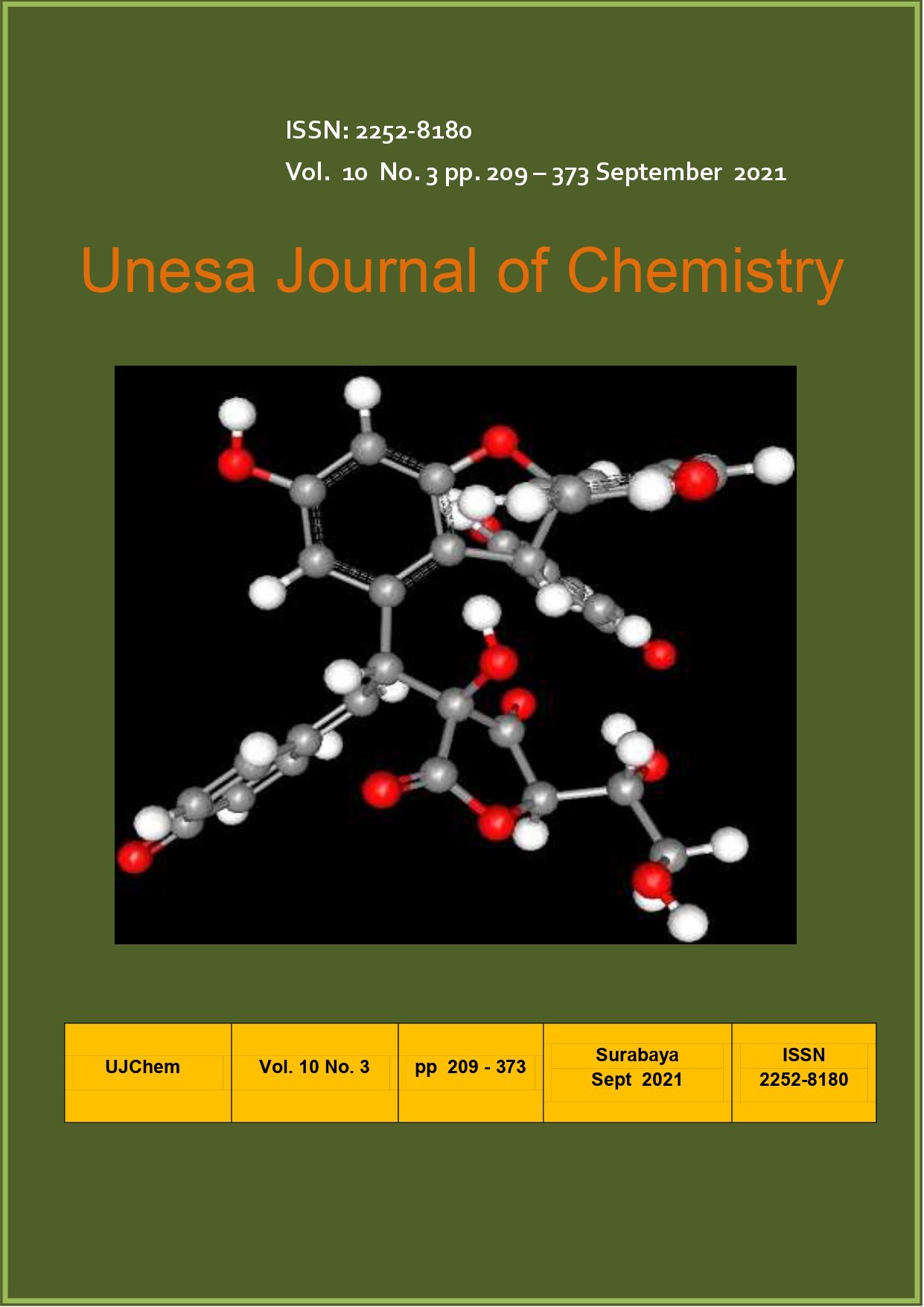PENGARUH LAMA PEMANASAN PROSES FERMENTASI TERHADAP KADAR FENOLIK TOTAL DAN AKTIVITAS ANTIOKSIDAN BAWANG HITAM THE EFFECT OF HEATING TIME FERMENTATION PROCESS ON TOTAL PHENOLIC CONTENT AND ANTIOXIDANT ACTIVITY OF BLACK GARLIC
Main Article Content
Downloads
Download data is not yet available.
Article Details
How to Cite
Solichah, A., & Herdyastuti, N. (2021). PENGARUH LAMA PEMANASAN PROSES FERMENTASI TERHADAP KADAR FENOLIK TOTAL DAN AKTIVITAS ANTIOKSIDAN BAWANG HITAM: THE EFFECT OF HEATING TIME FERMENTATION PROCESS ON TOTAL PHENOLIC CONTENT AND ANTIOXIDANT ACTIVITY OF BLACK GARLIC. Unesa Journal of Chemistry, 10(3), 280–287. https://doi.org/10.26740/ujc.v10n3.p280-287
Issue
Section
Articles

